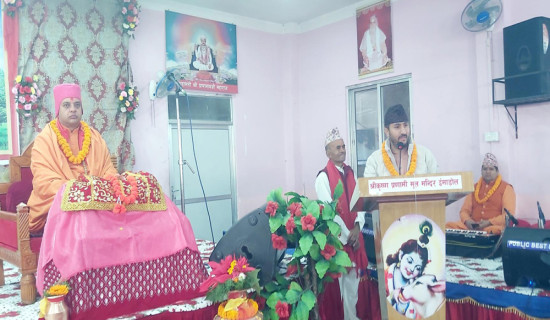- Sunday, 7 December 2025
Ensure Total Literacy
Literacy empowers and liberates people, helping them develop essential capabilities for living a dignified life. It is indeed the wherewithal, which supports individuals to learn a new skill needed to access better job opportunities while playing an important role in reducing poverty and enhancing public health. As per the National Population and Housing Census 2021, the literacy rate of people aged five years and above is 76.2 per cent in Nepal while the literacy rate of people aged 15-60 years stands at 85 per cent. Although Nepal government launched the 'Literate Nepal Campaign' one decade ago, 13 districts are yet to be declared to be fully literate.
Eight districts of Madhes Province and four districts of Karnali Province namely Mugu, Humla, Jumla and Kalikot are yet to be declared cent per cent literate. In the past one and half decades the government has invested 10 billion rupees in the Literate Nepal Campaign, but has not been able to get the desired outcomes. Stakeholders often stress that the drive needs to go forward in more aggressive way with emphasis on upgrading the goal of literacy in the changed global context. As part of the programme, total literacy status is given to those places that have achieved a 95 per cent literacy rate among the 15-60-year-old population.
In the changing global context, the definition of literacy is changing its essence, which includes being able to read, write and do basic calculations, and the aim should be linked to accessing economic benefits and enhancing life skills. The government has prepared a 12-point list that incorporates the ability to read letters, write names, use mobile phones and read calendars among the skills for someone to qualify as literate, but this alone may not be enough. In today's world, making smooth communication through the use of tech gadgets is also vital.
The government is increasing its investment in education, promoting early childhood education, increasing people's access to books and other reading materials, and offering an adult literacy programme to increase literacy rate among its citizens. But there is a long way to go to attain the goal of attaining total literacy. Speaking on the occasion of International Literacy Day on Sunday, Prime Minister KP Sharma Oli said that the government's primary goal is to ensure that every school-age chid has access to quality education and that lifelong learning opportunities are available to all Nepalis. The Prime Minister also stressed that joint endeavours of the government, private sector, social organisations, and all stakeholders to end illiteracy, thereby building a literate Nepal and contribute to the nation's prosperous future.
As per the National Population and Housing Census, 83.6 per cent of men are literate while only 69.4 per cent of women are literate. It shows there is a big disparity in male and female literacy rates. To bridge the gender disparity in their literacy, the government should bring programmes to increase girls' equal access to education and work on reducing dropout rates of school girls. The government should also focus on improving school infrastructure and providing financial and social support to the families of girl children. Many girls born in poor and backward families are deprived of an opportunity to go to school as they have to attend domestic chores, cattle grazing and taking care of younger siblings. To end this situation, the rule of compulsory schooling should be strictly implemented.

















